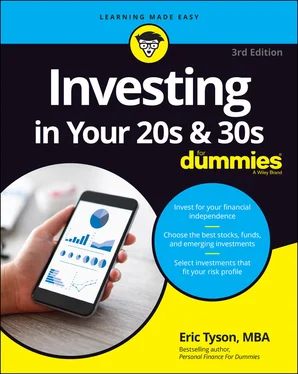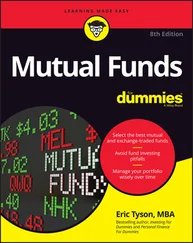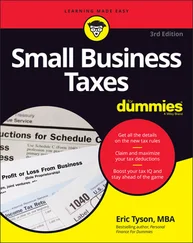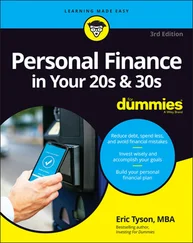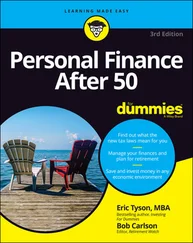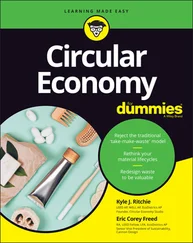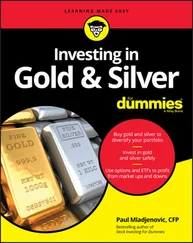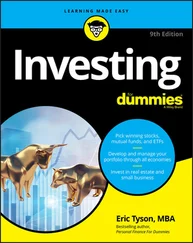Eric Tyson - Investing in Your 20s & 30s For Dummies
Здесь есть возможность читать онлайн «Eric Tyson - Investing in Your 20s & 30s For Dummies» — ознакомительный отрывок электронной книги совершенно бесплатно, а после прочтения отрывка купить полную версию. В некоторых случаях можно слушать аудио, скачать через торрент в формате fb2 и присутствует краткое содержание. Жанр: unrecognised, на английском языке. Описание произведения, (предисловие) а так же отзывы посетителей доступны на портале библиотеки ЛибКат.
- Название:Investing in Your 20s & 30s For Dummies
- Автор:
- Жанр:
- Год:неизвестен
- ISBN:нет данных
- Рейтинг книги:4 / 5. Голосов: 1
-
Избранное:Добавить в избранное
- Отзывы:
-
Ваша оценка:
- 80
- 1
- 2
- 3
- 4
- 5
Investing in Your 20s & 30s For Dummies: краткое содержание, описание и аннотация
Предлагаем к чтению аннотацию, описание, краткое содержание или предисловие (зависит от того, что написал сам автор книги «Investing in Your 20s & 30s For Dummies»). Если вы не нашли необходимую информацию о книге — напишите в комментариях, мы постараемся отыскать её.
Discover your unique investing style!
Inside. . .
Learn how to start investingChoose stocks and funds wiselyMinimize your tax billDecide how much to investGet into real estateManage your level of riskInvest in small businessDiversify your portfolio
Investing in Your 20s & 30s For Dummies — читать онлайн ознакомительный отрывок
Ниже представлен текст книги, разбитый по страницам. Система сохранения места последней прочитанной страницы, позволяет с удобством читать онлайн бесплатно книгу «Investing in Your 20s & 30s For Dummies», без необходимости каждый раз заново искать на чём Вы остановились. Поставьте закладку, и сможете в любой момент перейти на страницу, на которой закончили чтение.
Интервал:
Закладка:
You can ask the advisor to send you a copy of his Form ADV. You can also find out whether the advisor is registered and whether he has a track record of problems by calling the SEC at 800-732-0330 or by visiting its website at www.adviserinfo.sec.gov . Many states require the registration of financial advisors, so you should also contact the department that oversees advisors in your state. Visit the North American Securities Administrators Association’s website ( www.nasaa.org ), and click the Contact Your Regulator link on the home page.
Chapter 2
Using Investments to Accomplish Your Goals
IN THIS CHAPTER
 Investing for short-term consumption goals
Investing for short-term consumption goals
 Working toward a home purchase
Working toward a home purchase
 Planning for financial independence/retirement
Planning for financial independence/retirement
 Assessing your desire to take risk
Assessing your desire to take risk
Saving and investing money can make you feel good and in control. Ultimately, most folks are investing money to accomplish particular goals. Saving and investing for a car purchase, expenses for higher education, a home purchase, new furniture, or a vacation are typical short-term goals. You can also invest toward longer-term goals, such as your financial independence or retirement decades in the future.
In this chapter, I discuss how you can use investments to accomplish common shorter- and longer-term goals.
Setting and Prioritizing Your Shorter-Term Goals
Unless you earn really big bucks or expect to have a large family inheritance to tap, your personal and financial desires will probably outstrip your resources. Thus, you must prioritize your goals.
One of the biggest mistakes I see people make is rushing into a financial decision without considering what’s really important to them. Because many people get caught up in the responsibilities of their daily lives, they often don’t take time for reflection often because they feel that they lack the time. Take that time, because people who identify their goals and then work toward them, which often requires changing some habits, are far more likely to accomplish something significant.
In this section, I discuss common “shorter-term” financial goals — such as establishing an emergency reserve, making major purchases, owning a home, and starting a small business — and how to work toward them. Accomplishing such goals almost always requires saving money.
Accumulating a rainy-day fund
The future is unpredictable. Take the uncertainty simply surrounding your job: You could lose your job, or you may want to leave it.
Consider what happened in 2020 with the COVID-19 pandemic and the unexpected and lengthy government-mandated shutdowns in some parts of the country, which led to large layoffs in particular industries like restaurants, retail, and travel-related businesses. While the 2020 recession was unusual in many respects, recessions aren’t unusual and even when the overall economy is growing, some employers let employees go. Suppose an elderly relative, for example, needs some assistance for a period of time? Look, I’m not trying to be a pessimist or negative, but problems happen, and sometimes there are financially downsides that can come with them.
Because you don’t know what the future holds, preparing for the unexpected is financially wise. Enter the emergency or rainy-day fund.
The size of your emergency fund depends on your personal situation. Begin by considering how much you spend in a typical month. Here are some benchmarks for how many months’ worth of living expenses you should have:
Three months’ living expenses: When you’re starting out, this minimalist approach makes sense if your only current source of emergency funds is a high-interest credit card. Longer-term, you could make do with three months’ living expenses if you have other accounts, such as a 401(k), or family members and close friends whom you can tap for a short-term loan.
Six months’ living expenses: If you don’t have other places to turn for a loan, or if you have some instability in your employment situation or source of income, you need more of a cushion.
Twelve months’ living expenses: Consider this large a stash if your income fluctuates greatly or if your occupation involves a high risk of job loss, finding another job could take you a long time, or you don’t have other places to turn for a loan.
Saving for large purchases
Most people want things — such as furniture, a vacation, or a car — that they don’t have cash on hand to pay for. I strongly advise saving for your larger consumer purchases to avoid paying for them over time with high-interest consumer credit. Don’t take out credit card or auto loans — otherwise known as consumer credit — to make large purchases.
And, don’t be duped by a seemingly low interest rate on, for example, a car loan. You could get the car at a lower price if you don’t opt for such a loan.
 Paying for high-interest consumer debt can undermine your ability to save toward your goals and your ability to make major purchases in the future. Don’t deny yourself gratification if it’s something you really need and want and can afford given your overall financial situation; just figure out how to delay it. When contemplating the purchase of a consumer item on credit, add up the total interest you’d end up paying on your debt, and call it the price of instant gratification.
Paying for high-interest consumer debt can undermine your ability to save toward your goals and your ability to make major purchases in the future. Don’t deny yourself gratification if it’s something you really need and want and can afford given your overall financial situation; just figure out how to delay it. When contemplating the purchase of a consumer item on credit, add up the total interest you’d end up paying on your debt, and call it the price of instant gratification.
Investing for a small business or home
In your early years of saving and investing, deciding whether to save money to buy a home or to put money into a retirement account (for the tax benefits and to work toward the goal of future financial independence) presents a dilemma. In the long run, owning your own home is usually a wise financial move. On the other hand, saving sooner for retirement makes achieving your goals easier and reduces your income tax bill.
Presuming that both goals are important to you, you can save toward both goals: buying a home and retiring. If you’re eager to own a home, you can throw all your savings toward achieving that goal and temporarily put your retirement savings on hold.
 You can make penalty-free withdrawals of up to $10,000 from Individual Retirement Accounts (IRAs) toward a first-time home purchase. You may also be able to have the best of both worlds if you work for an employer that allows borrowing against retirement account balances. You can save money in the retirement account and then borrow against it for the down payment on a home. Consider this option with great care, though, because retirement account loans generally must be repaid within a few years or when you quit or lose your job (ask your employer for the details).
You can make penalty-free withdrawals of up to $10,000 from Individual Retirement Accounts (IRAs) toward a first-time home purchase. You may also be able to have the best of both worlds if you work for an employer that allows borrowing against retirement account balances. You can save money in the retirement account and then borrow against it for the down payment on a home. Consider this option with great care, though, because retirement account loans generally must be repaid within a few years or when you quit or lose your job (ask your employer for the details).
When saving money for starting or buying a business, most people encounter the same dilemma they face when deciding to save to buy a house: If you fund your retirement accounts to the exclusion of earmarking money for your small-business dreams, your entrepreneurial aspirations may never become reality. Generally, I advocate hedging your bets by saving money in your tax-sheltered retirement accounts as well as toward your business venture. An investment in your own small business can produce great rewards, so you may feel comfortable focusing your savings on your own business.
Читать дальшеИнтервал:
Закладка:
Похожие книги на «Investing in Your 20s & 30s For Dummies»
Представляем Вашему вниманию похожие книги на «Investing in Your 20s & 30s For Dummies» списком для выбора. Мы отобрали схожую по названию и смыслу литературу в надежде предоставить читателям больше вариантов отыскать новые, интересные, ещё непрочитанные произведения.
Обсуждение, отзывы о книге «Investing in Your 20s & 30s For Dummies» и просто собственные мнения читателей. Оставьте ваши комментарии, напишите, что Вы думаете о произведении, его смысле или главных героях. Укажите что конкретно понравилось, а что нет, и почему Вы так считаете.
